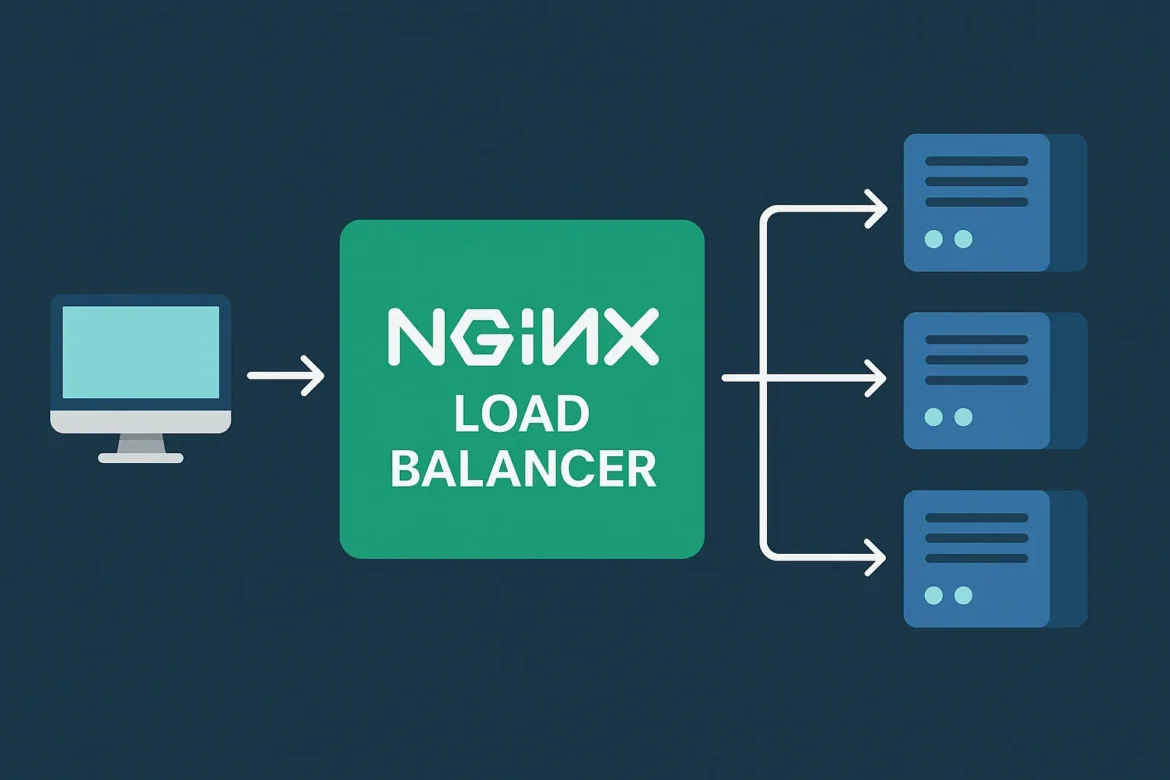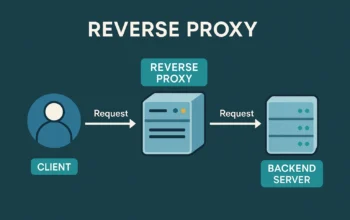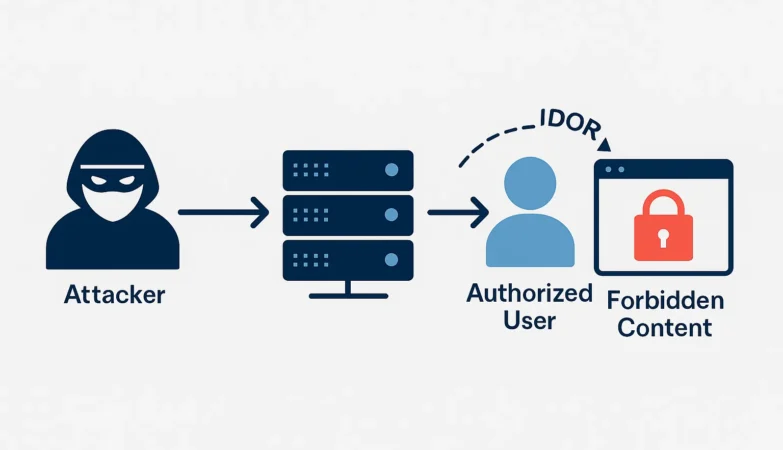Nginx load balancer is one of the most important components in modern web infrastructure. As applications scale across microservices, containers, and multi-node backends, Nginx remains the gold-standard for distributing traffic efficiently.
This advanced guide takes you deeper into how Nginx load balancing works, the internal architecture, advanced settings, real-world performance tuning, and configuration examples built for production environments.
Suitable for:
✔ Security Engineers
✔ DevOps & SRE
✔ Web Infrastructure Teams
✔ Cloud Architects
✔ Students & Developers learning scaling concepts
Understanding Nginx Load Balancing
An nginx load balancer sits between clients and backend servers, intelligently routing requests to ensure:
- Zero downtime
- High throughput
- Low latency
- No single point of failure
- Secure handling of connections
Nginx works as a reverse proxy, meaning users never directly interact with backend servers. This isolates your application while giving you full control over routing, caching, SSL, rate limiting, and security.
Why Nginx Is the Best Open-Source Load Balancer
Nginx is preferred over alternatives (HAProxy, Envoy, Traefik) because:
✔ Event-driven non-blocking architecture
Nginx can handle tens of thousands of concurrent requests with minimal CPU.
✔ Native Layer 7 load balancing
Perfect for routing based on URLs, headers, cookies, etc.
✔ Extremely flexible config
You can forward traffic based on:
- Device type
- Path
- Query params
- Backend status
- GeoIP
- Cookies
- Authentication
✔ Lower latency & footprint
Nginx is lightweight compared to Envoy or HAProxy.
⭐ 5 Powerful Nginx Load Balancer Techniques
1) Round Robin Load Balancing (Deep Explanation)
Round Robin is the simplest and most widely used method in the Nginx load balancer architecture. Every incoming request is sent to backend servers in a sequential loop:
Server A → Server B → Server C → then back to A.
This evenly distributes traffic across your fleet, making it ideal for systems in which:
- All backend servers have equal hardware capacity
- The workload is consistent across requests
- Sessions are stateless or stored externally (Redis, DB)
Advanced benefits include:
- Predictable distribution patterns
- No need for complex session tracking
- Works perfectly with microservices that scale horizontally
In production environments, Round Robin is preferred when you want reliability without additional overhead or complex load balancing algorithms.
2) Least Connections Method (Highly Recommended for APIs)
The Least Connections algorithm directs traffic to the server with the lowest number of active connections.
This is especially useful when dealing with:
- Long-lived API calls
- Database-heavy workloads
- Asynchronous operations
- Streaming or WebSocket traffic
How it improves performance:
- Prevents certain nodes from becoming overloaded
- Dynamically adjusts traffic based on real-time load
- Offers significantly better performance during peak hours
For example, if Server A has 5 active connections and Server B has 1, the Nginx load balancer will send the next request to Server B, ensuring optimal throughput.
3) IP Hash Sticky Sessions (Session Persistence Explained)
Some applications require users to stay connected to the same backend server—common in:
- Shopping carts
- Payment gateways
- Admin dashboards
- Legacy apps that store sessions in RAM
The ip_hash directive hashes the client’s IP address and routes them consistently to the same backend.
Advantages include:
- Predictable user behavior
- No need for external session storage
- Compatibility with legacy session stacks
But keep in mind:
- Not ideal for multi-region deployments
- IP changes (mobile networks, VPNs) may break stickiness
- Load distribution becomes uneven
4) Weighted Load Balancing (Advanced Resource Optimization)
Weighted load balancing lets you assign priority to servers.
Example:
server 10.0.0.11 weight=5;
server 10.0.0.12 weight=1;
This tells Nginx that Server 11 is more powerful and should handle 5× more requests than Server 12.
Use cases:
- Mixed hardware clusters (8-core + 32-core servers)
- Gradual rollout of new hardware nodes
- Traffic shaping strategies
This technique helps organizations scale gradually and utilize server capacity efficiently while maintaining stability.
5) Health Checks & Failover (Critical for High Availability)
Nginx continuously monitors backend servers through passive checks.
If a server repeatedly fails (HTTP 500/502/504/timeouts), it’s marked as “unhealthy.”
Nginx then:
- Immediately removes the server from rotation
- Routes traffic only to healthy nodes
- Automatically reintegrates the node once healthy
This results in:
- Zero downtime during crashes
- Seamless user experience
- Self-healing infrastructure
When combined with weighted balancing + sticky sessions + SSL termination, health-check-based failover becomes extremely powerful in large-scale clusters.
⚙️ Load Balancer Algorithms (Deep Dive)
Round Robin
Simple, predictable, and efficient for stateless and evenly distributed workloads.
Great for web servers, image servers, backend REST APIs.
Least Connections
Adapts to real-time server load.
Best for environments where requests vary in complexity or duration.
IP Hash
Ensures consistent server selection based on client identity.
Protects user experience in session-bound applications.
Least Time (Nginx Plus)
Uses request processing time + active connections to pick the fastest backend.
Excellent for latency-sensitive apps (trading, banking, IoT).
Weighted Algorithms
Dynamically support servers with different capacities.
Perfect for hybrid clusters, cloud migrations, rolling upgrades.
JWT/Cookie Routing
Load balance based on authenticated identities—useful in zero-trust systems.
🧪 Production-Grade Nginx Load Balancer Configuration
http {
upstream api_backend {
zone backend_zone 64k;
server 10.0.0.11 weight=3 max_fails=2 fail_timeout=10s;
server 10.0.0.12 weight=1;
server 10.0.0.13 backup;
}
server {
listen 80;
server_name hackervault.tech;
location / {
proxy_pass http://api_backend;
proxy_set_header Host $host;
proxy_set_header X-Real-IP $remote_addr;
proxy_set_header X-Forwarded-For $proxy_add_x_forwarded_for;
proxy_connect_timeout 3s;
proxy_read_timeout 30s;
}
}
}
💡 Key features in this config:
- backup server for failover
- weighted load balancing
- zone memory sharing for multiple worker processes
- timeout tuning for reliability
🔄 Session Persistence (Sticky Sessions)
Sticky session via IP hashing:
upstream app_servers {
ip_hash;
server 10.0.0.11;
server 10.0.0.12;
}
For cookie-based sticky sessions:
sticky cookie srv_id expires=1h path=/;
💥 Health Checks & Failover Mechanics
Passive Health Checks
Triggered when backends return:
- 500
- 502
- 504
- Timeout
Active Health Checks (Nginx Plus)
Regular probing of server health:
health_check interval=5s fails=2 passes=1;
🔐 SSL Termination & Performance Optimization
Nginx excels at TLS offloading:
Recommended SSL settings:
ssl_protocols TLSv1.2 TLSv1.3;
ssl_ciphers HIGH:!aNULL:!MD5;
ssl_session_cache shared:SSL:10m;
ssl_session_timeout 10m;
ssl_prefer_server_ciphers on;
Optimization features:
- HTTP/2
- GZIP compression
- Brotli (optional)
- Open file cache
- Buffers & connection reuse
🛡️ Security Hardening for Nginx Load Balancer
✔ Rate Limiting to Stop Abuse & Bots
Nginx supports sophisticated rate-limiting that prevents:
- Layer 7 DDoS attacks
- Credential-stuffing bots
- API abuse
- Scrapers
Example:
limit_req_zone $binary_remote_addr zone=antiddos:10m rate=10r/s;
✔ Add OWASP ModSecurity WAF
ModSecurity + OWASP CRS protects your load balancer from:
- SQL injection
- XSS
- RCE attacks
- Path traversal
- API abuse
This transforms Nginx into a security gateway in front of your backend.
✔ Enable Strict SSL Security
TLS offloading reduces load on backend servers while improving security.
Enforce:
- TLS 1.3
- Forward secrecy
- Strong ciphers
- HSTS
✔ Hide Backend Infrastructure
Block direct access to backend nodes using firewalls and private subnets.
Only the Nginx load balancer should communicate with internal servers.
✔ Use Allow/Deny Access Controls
Prevent unauthorized access at the load balancer layer.
allow 10.0.0.0/8;
deny all;
🏗️ Real-World Architecture Use Cases
1) Microservices with Kubernetes
Nginx acts as an ingress controller managing:
- Path-based routing
- Canary deployments
- SSL termination
- Service mesh integrations
Used by Netflix, Uber & large SaaS platforms.
2) High-Traffic APIs & Backend Services
If your API receives millions of requests per day, the Nginx load balancer optimizes:
- Keepalive connections
- Caching
- Failover
- Low-latency routing
- Rate limiting
Perfect for fintech, gaming, e-commerce.
3) E-commerce Websites
User sessions are critical.
IP hash + session cookies ensure users don’t lose cart contents when nodes restart or crash.
4) Banking & Financial Applications
Regulated industries require:
- High availability
- Strong SSL enforcement
- Predictable failover
- Logging + audit trails
Nginx handles these requirements efficiently.
5) SaaS Multi-Tenant Platforms
Route specific tenants based on:
- Domain
- API key
- Cookie
- JWT claims
This helps scale customer-specific workloads smoothly.
People Also Ask (PAA)
Q: What is Nginx load balancer used for?
A: To distribute traffic across multiple backend servers to increase speed and availability.
Q: Is Nginx good for load balancing?
A: Yes — it’s one of the fastest and most reliable open-source load balancers.
Q: Does Nginx support HTTPS load balancing?
A: Yes. Nginx can terminate SSL or pass-through encrypted traffic.
FAQ
Internal & External Links
Internal Links
- https://hackervault.tech/self-signed-ssl-nginx-linux/
- https://hackervault.tech/tls-handshake-secure-communication/
- https://hackervault.tech/web-security-101-how-websites-get-hacked-and-how-to-defend-them/












That’s a solid point about team dynamics! Seeing how VIP platforms like id888 casino cater to dedicated players really highlights the importance of a quality experience. It’s all about building trust & rewarding loyalty, right? 🤔
Just discovered betrupeesgame and I’m hooked! The games are actually pretty fun, and the payouts are decent too. Good way to kill some time and maybe win some money doing it!